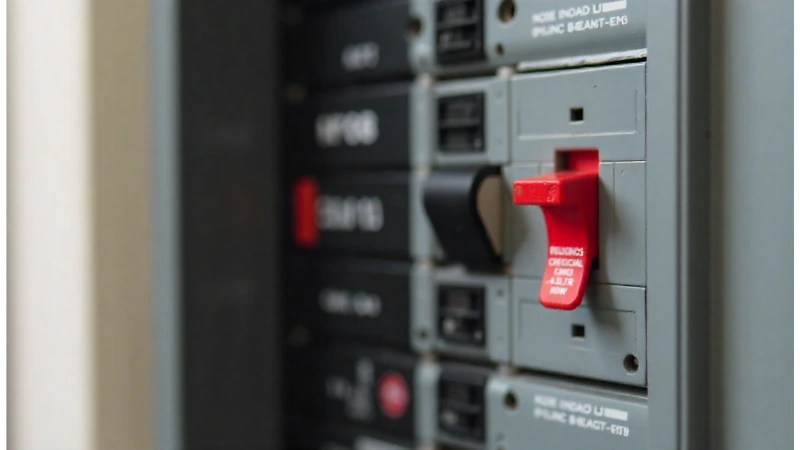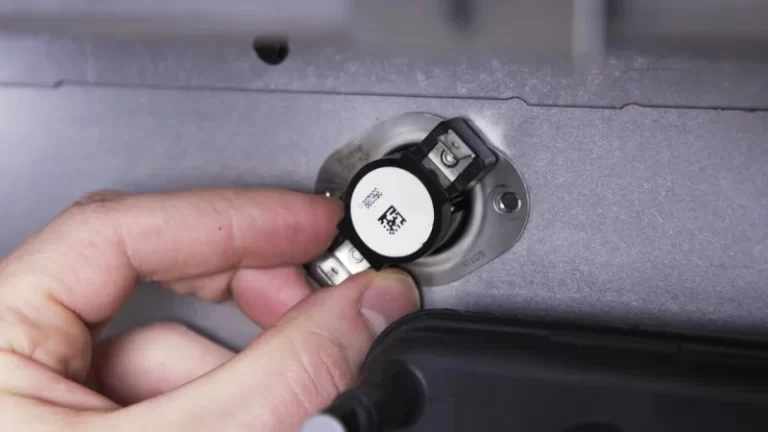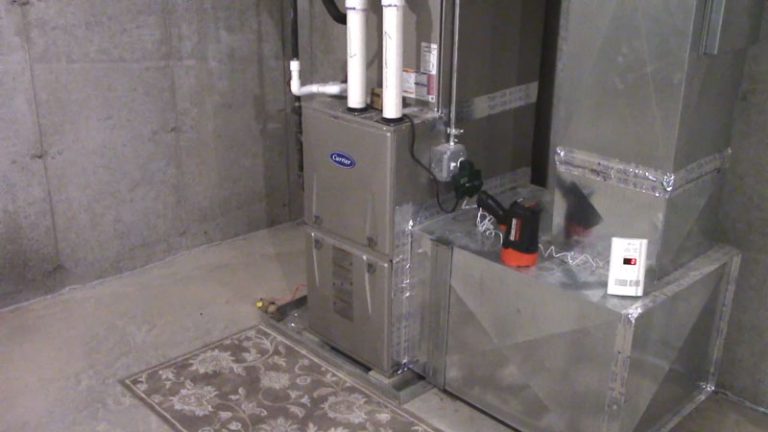Electric Wall Heater Turning On By Itself? Why? Unmasking the Ghost in the Machine
You’re sound asleep, comfortable in your bed, when a familiar whirring sound startles you awake. The electric wall heater has turned on by itself again. It’s an unsettling experience that leaves many homeowners wondering about strange electrical issues or even a “ghost in the machine.”
Rest assured, there’s usually a logical explanation for this phantom activation. Understanding the causes is the first step toward resolving the issue and regaining control over your home’s climate and energy bill.
An electric wall heater that cycles on unexpectedly is more than just a nuisance; it’s a symptom of an underlying problem. This behavior can lead to wasted energy, higher utility bills, and potential safety concerns.
Before you resign yourself to flipping the breaker every night, let’s explore the common culprits behind this mysterious behavior and outline the steps you can take to fix it.
You'll Learn About
Decoding the Reasons Your Heater Has a Mind of Its Own
From simple thermostat glitches to more complex wiring issues, several factors can cause your electric wall heater to turn on without your command. Identifying the root cause is crucial for a successful and safe resolution. Let’s break down the most common reasons for this phantom heating.
The Thermostat: The Most Likely Culprit
The thermostat is the brain of your heating system, telling it when to turn on and off to maintain your desired temperature. When it malfunctions, it can send incorrect signals to the heater. A faulty thermostat is one of the most frequent reasons for a heater activating on its own.
Internal components of the thermostat can wear out over time, leading to inaccurate temperature readings or failed connections. Sometimes, the issue is as simple as incorrect settings on a digital or programmable thermostat. A miscalibrated thermostat might think the room is colder than it actually is, triggering the heater to turn on.
Hidden Features: Anti-Frost and Smart Functions
Many modern electric heaters come equipped with intelligent features designed for safety and efficiency, which can sometimes be mistaken for a malfunction. One such feature is an anti-frost or freeze-protection mode. This function automatically turns the heater on if the room temperature drops below a certain point, typically around 5°C (41°F), to prevent pipes from freezing. This is a safety mechanism that could be activating during unexpectedly cold nights.
Smart heaters with “adaptive start” or “optimum start” features learn your heating schedule and turn on ahead of time to ensure the room reaches the desired temperature at the programmed time. While convenient, this can appear as if the heater is turning on randomly if you’re not aware of this predictive function.

An image of a home’s circuit breaker panel, with a focus on the switch corresponding to the heating system.
Electrical Issues: Wiring and Power Surges
Problems within your home’s electrical system can also be to blame. Faulty or loose wiring can create intermittent connections, causing the heater to turn on and off unexpectedly. This is a serious issue that requires immediate attention from a qualified electrician, as it can pose a fire hazard.
Power surges, which are brief spikes in your home’s electrical current, can also affect your heater’s operation. These surges can be caused by lightning, issues with the power grid, or even the cycling of large appliances in your home. While a single surge might not cause immediate failure, repeated small surges can damage the sensitive electronic components in your heater or thermostat over time, leading to erratic behavior.
Your Action Plan: How to Stop Phantom Heating
Now that we’ve identified the potential causes, it’s time to take action. Follow these troubleshooting steps to diagnose and fix the problem. Always prioritize safety by turning off the power to the heater at the circuit breaker before performing any inspections or repairs.
Step 1: Investigate the Thermostat
Start with the simplest potential problem: the thermostat. If you have a digital thermostat, check for any programmed schedules or smart features that might be causing the unexpected activation. Review the user manual to understand functions like “optimum start” and disable them if you prefer manual control.
For both digital and mechanical thermostats, ensure the temperature setting is correct. If the heater still turns on when the knob is in the “off” position, the thermostat itself is likely faulty and needs replacement. Replacing a wall thermostat is a manageable DIY project for those with basic electrical knowledge, but when in doubt, call a professional.
Step 2: Rule Out Environmental Factors
Consider the placement of your heater and thermostat. If the thermostat is located on a poorly insulated exterior wall, it might be reading the colder temperature from outside and activating the heater unnecessarily. Similarly, drafts from windows or doors can trick the thermostat into thinking the room is colder than it is.
Addressing insulation issues, such as exploring the differences between 3-8 vs 1-2 drywall for better thermal performance, can sometimes resolve these phantom heating cycles.
Step 3: Check for Built-In Safety Features
Consult your heater’s manual to see if it has an anti-frost or freeze-protection mode. This is a common feature in many modern wall heaters. If your heater is turning on during particularly cold snaps, this safety feature is likely the cause. While you generally don’t want to disable a safety feature, being aware of it can provide peace of mind.
Step 4: Inspect the Electrical System
If you’ve ruled out thermostat and feature-related causes, the problem may lie with the electrical wiring. Turn off the power at the circuit breaker before proceeding. Carefully remove the heater’s cover plate and visually inspect the wiring for any loose connections, frayed wires, or signs of scorching.
Tighten any loose wire connections at both the heater unit and the thermostat. If you notice any damaged wires or feel uncomfortable with this step, it is crucial to contact a licensed electrician.
Faulty wiring is a significant fire risk and should not be ignored. Issues like a propane heater that flares up can be startling, but electrical faults are often silent and more dangerous.
Troubleshooting Summary Table
To help you quickly identify the problem and its solution, here is a summary of the common issues and recommended actions.
| Symptom | Potential Cause | Solution |
|---|---|---|
| Heater turns on even when the thermostat is set to “Off”. | Faulty Thermostat | Replace the thermostat. |
| Heater turns on during very cold nights. | Anti-Frost/Freeze-Protection Mode | This is a normal safety feature. Check the manual for temperature thresholds. |
| Heater turns on before the scheduled time. | Smart “Optimum Start” Feature | Disable the feature in the thermostat settings if you prefer manual control. |
| Heater turns on and off sporadically and randomly. | Loose Wiring or Power Surges | Turn off power. Check and tighten wire connections. Install a surge protector. Call an electrician for damaged wires. |
| Heater is on an uninsulated exterior wall and cycles frequently. | Poor Thermostat Placement/Insulation | Improve wall insulation or relocate the thermostat to an interior wall. |
When to Call a Professional
While many of these issues can be diagnosed and resolved by a homeowner, electrical work carries inherent risks. You should always call a qualified electrician if you are unsure about any step, if you discover damaged or burnt wiring, or if the problem persists after you’ve tried the basic troubleshooting steps.
Professionals have the tools and expertise to safely diagnose complex wiring issues and ensure your heating system, whether it’s a modern electric unit or an older system like Siegler gas heaters, is functioning correctly and safely. Your safety and peace of mind are worth the investment in professional service.
Conclusion: Taking Back Control of Your Comfort
An electric wall heater that turns on by itself can be a perplexing and frustrating problem. However, by systematically working through the potential causes—from thermostat settings and smart features to wiring and power issues—you can often identify and resolve the issue. A functioning heater should provide comfort on your terms, not operate with a mind of its own.
Start with the simplest solutions first, and never hesitate to call a professional for electrical work. By taking a proactive approach, you can ensure your home remains a warm, safe, and predictable sanctuary, free from the whims of a phantom heater.


